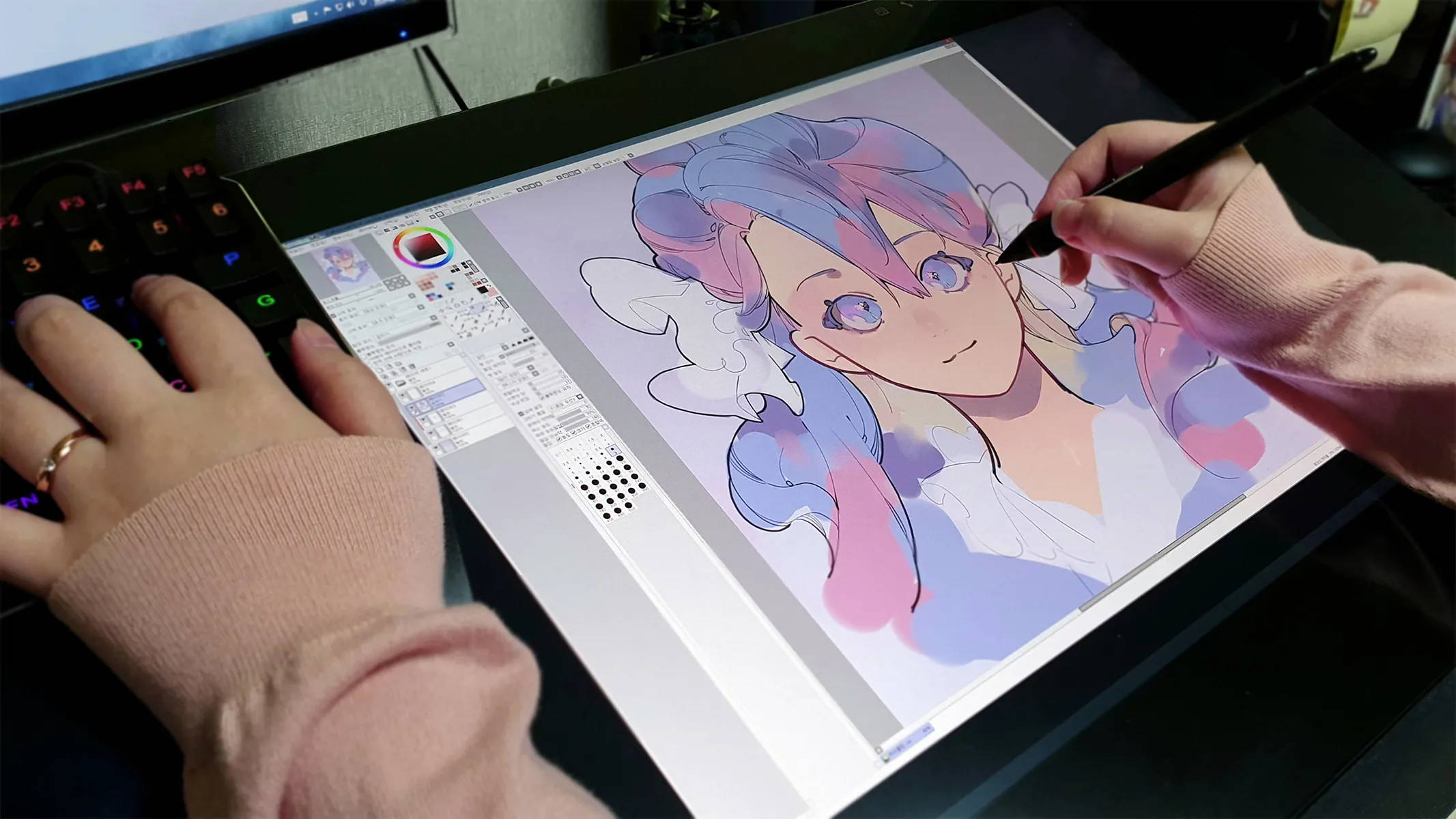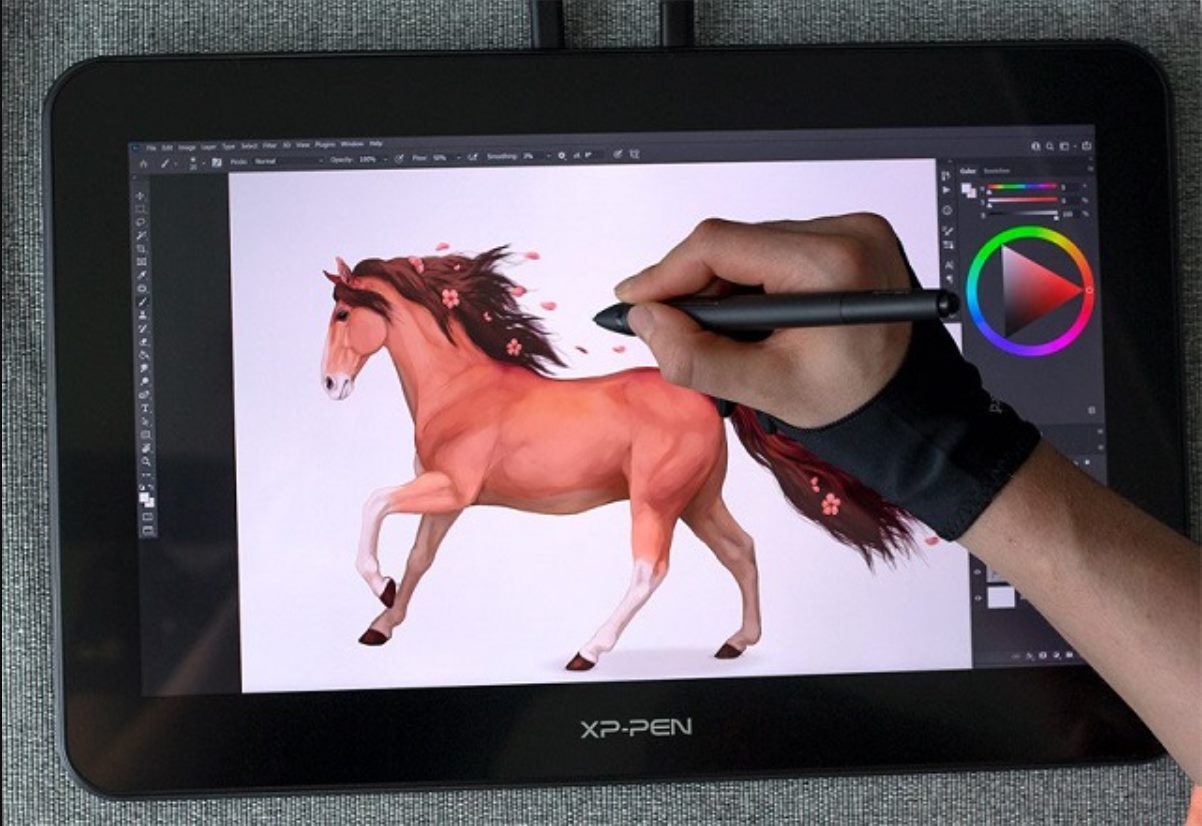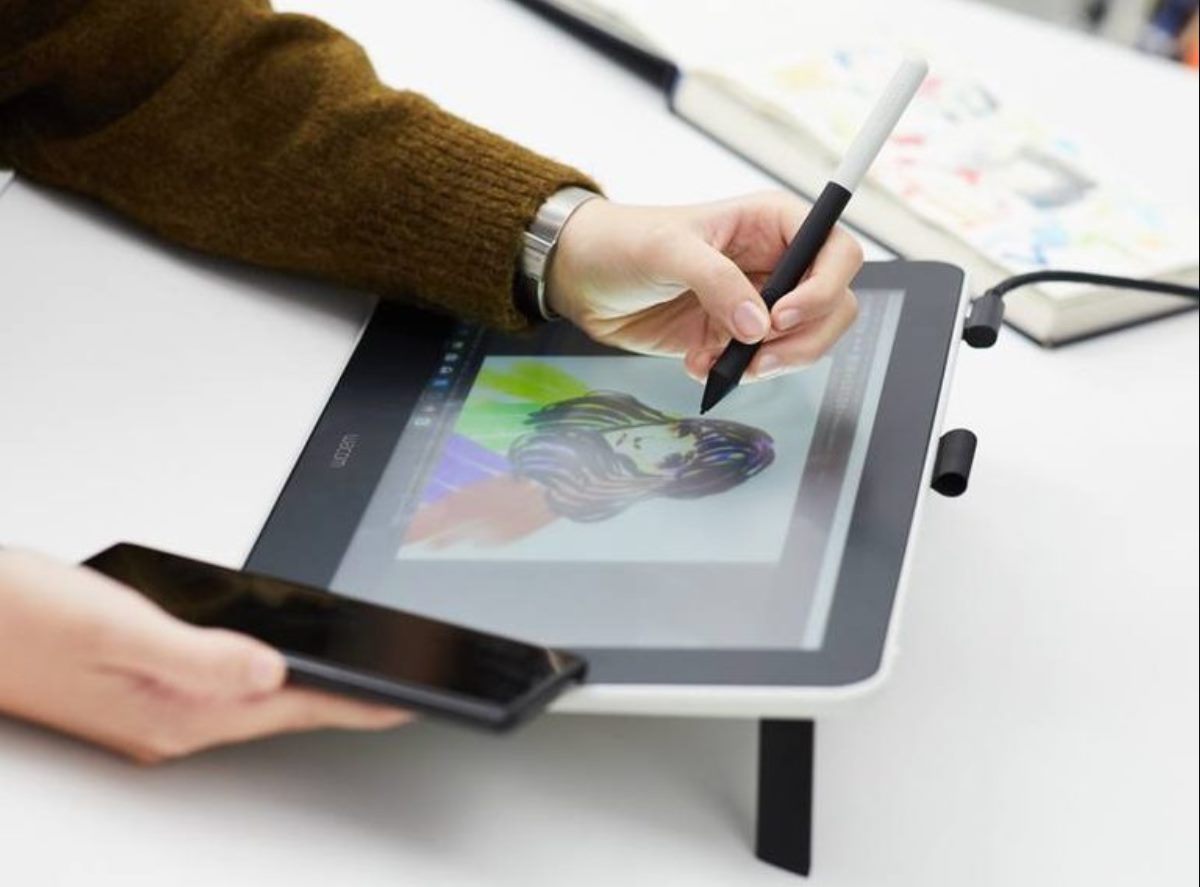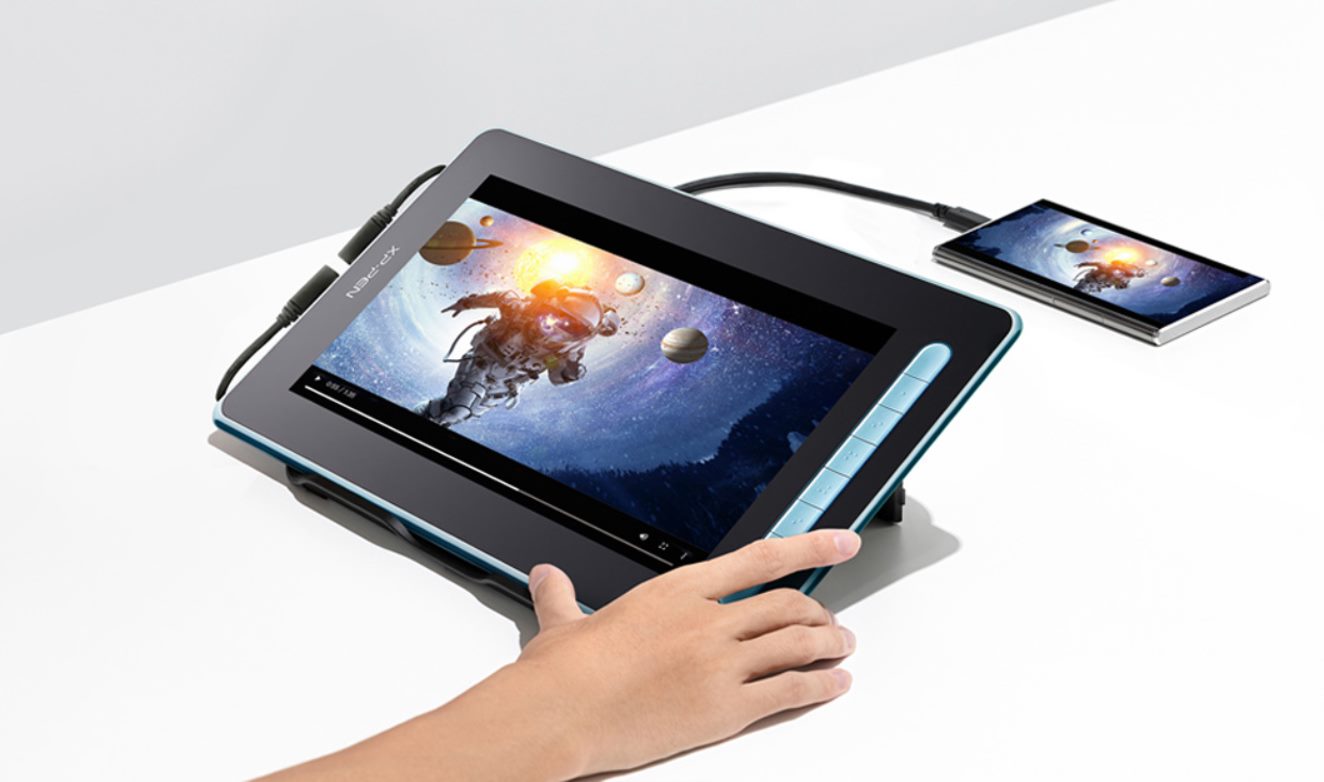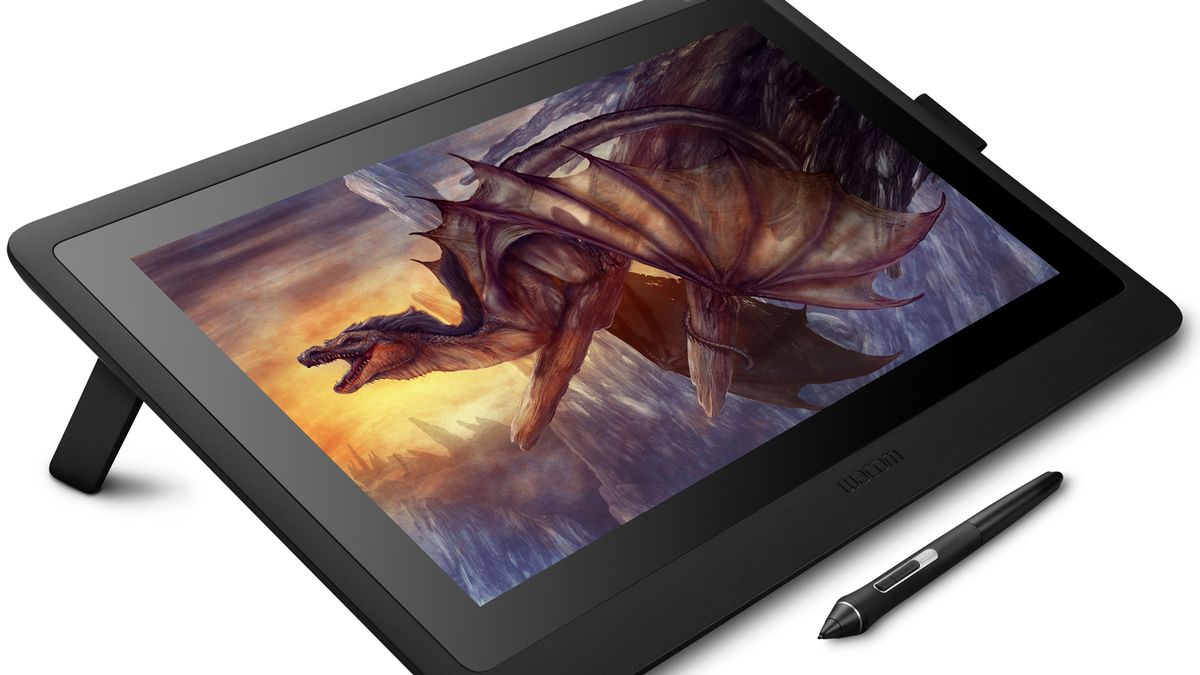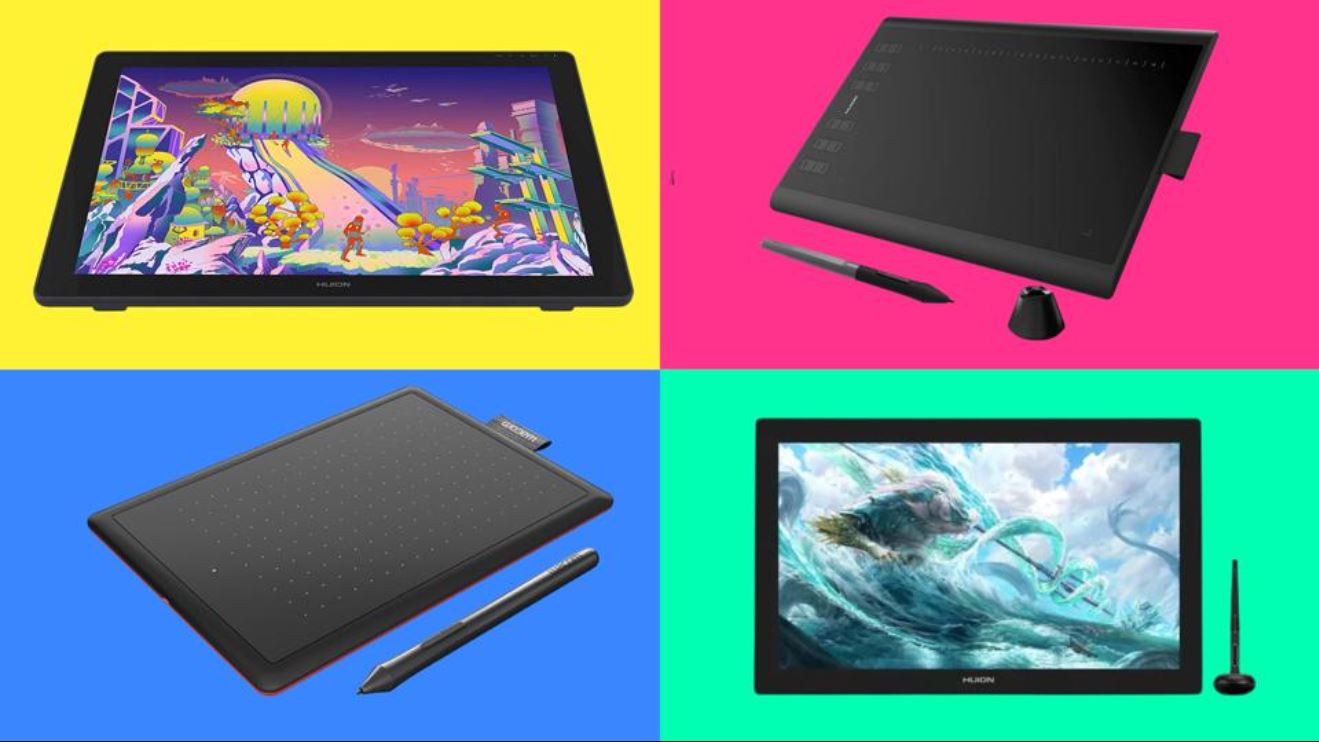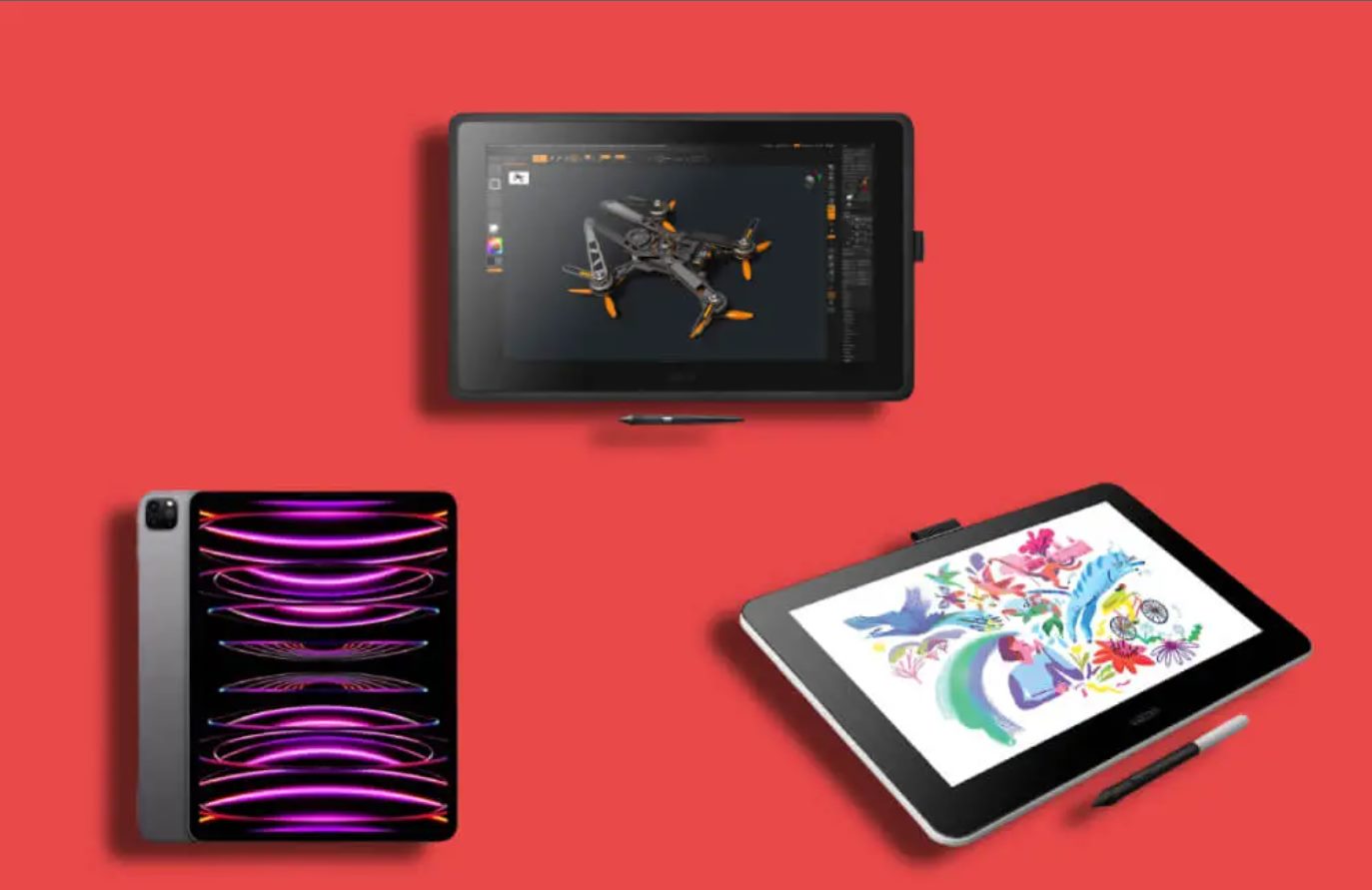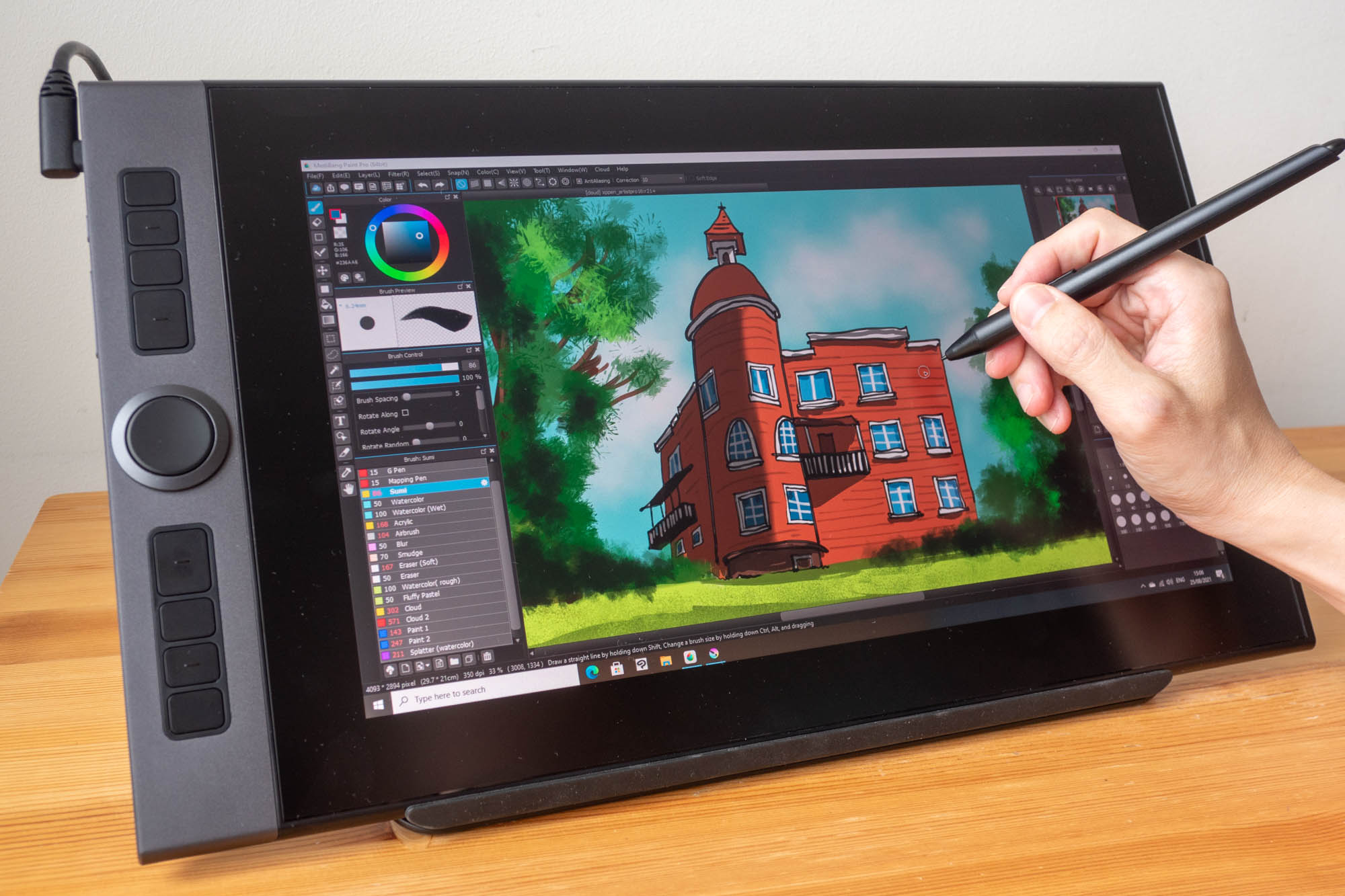Introduction
Welcome to the exciting world of digital art! Drawing on Paint Tool Sai with a tablet opens up a whole new realm of possibilities for artists. Whether you’re a beginner or an experienced artist looking to explore digital mediums, Paint Tool Sai is a fantastic software to unleash your creativity.
In this guide, we’ll walk you through the essentials of drawing on Paint Tool Sai with a tablet. We’ll cover everything from choosing the right tablet and installing the necessary drivers to exploring the various tools and techniques available in the software.
Paint Tool Sai is a lightweight yet powerful digital painting software known for its user-friendly interface and diverse range of features. It provides artists with a wide array of brushes, layers, filters, and blending modes to create stunning artwork with ease.
By using a tablet, you can achieve a more natural and intuitive drawing experience compared to a mouse. Tablets come with pressure sensitivity, allowing you to vary the thickness and opacity of your brush strokes based on the pressure applied. This level of control enhances your ability to create detailed and expressive artwork.
Whether you’re interested in creating vibrant illustrations, realistic portraits, or intricate concept art, Paint Tool Sai offers the versatility to bring your imagination to life. With its extensive toolset and customizable settings, you can unleash your creativity and develop your own unique artistic style.
Throughout this guide, we’ll provide step-by-step instructions, useful tips, and techniques to help you improve your digital drawing skills. So, let’s dive in and learn how to harness the power of Paint Tool Sai and your tablet to create stunning digital artwork!
Getting Started
Before you begin drawing on Paint Tool Sai with a tablet, there are a few essential steps you need to follow to ensure a smooth and enjoyable experience:
Choose the Right Tablet: The first step is to select a tablet that suits your needs and budget. Look for a tablet that offers a good balance of pressure sensitivity, size, and compatibility with your computer. Popular options include Wacom Intuos, Huion Kamvas, and XP-Pen Artist tablets.
Install the Tablet Driver: Once you have your tablet, you’ll need to install the appropriate driver software on your computer. The driver enables your tablet to communicate with your computer and ensures proper functionality. Visit the manufacturer’s website and download the latest driver version for your tablet model.
Configure the Tablet Settings: After installing the driver, you may need to adjust the tablet settings to personalize your drawing experience. Most tablets come with software that allows you to customize the pen pressure sensitivity, mapping, and button configurations to suit your preferences. Take some time to explore these settings and make any necessary adjustments.
Once you have the tablet and driver set up, you’re ready to dive into the world of Paint Tool Sai. In the following sections, we’ll guide you through the various features of the software and help you make the most out of your digital drawing experience.
Next, let’s explore how to familiarize yourself with the basics of Paint Tool Sai and set up your canvas for your first masterpiece!
Choosing the Right Tablet
Choosing the right tablet is crucial for a seamless and enjoyable digital drawing experience on Paint Tool Sai. Here are some factors to consider when selecting a tablet:
Pressure Sensitivity: One of the most significant advantages of drawing with a tablet is the ability to vary the thickness and opacity of your brush strokes based on the pressure applied. Look for a tablet that offers a high level of pressure sensitivity, typically measured in levels. Higher levels of pressure sensitivity allow for more precise and nuanced control over your artwork.
Size: Tablets come in various sizes, typically ranging from small to large. The size you choose depends on your personal preferences and the type of artwork you intend to create. If you work with intricate details and require precision, a smaller tablet may be more suitable. However, if you prefer a larger drawing area and have more sweeping brushstrokes, a larger tablet may be a better fit.
Compatibility: Ensure that the tablet you choose is compatible with your computer’s operating system. Most tablets work well with both Windows and Mac systems, but it’s always a good idea to double-check compatibility before making a purchase.
Ergonomics: Consider the ergonomics of the tablet, including the weight, design, and comfort of the stylus. A tablet that feels comfortable and natural in your hand will enhance your drawing experience, allowing you to work for longer periods without discomfort.
Budget: Set a budget for your tablet purchase. Tablets vary in price, with high-end models offering more advanced features and functionalities. Determine what features are essential for your needs and find a tablet that fits within your budget.
Popular tablet brands for digital artists include Wacom, Huion, and XP-Pen. These brands offer a range of tablet models to suit different preferences and budgets. Consider reading reviews and comparing specifications to narrow down your options.
By taking these factors into account, you can ensure that you choose a tablet that caters to your unique drawing style and preferences, allowing you to fully enjoy the process of creating digital art on Paint Tool Sai.
Installing the Tablet Driver
Installing the tablet driver is an essential step in using your tablet with Paint Tool Sai. The tablet driver acts as a bridge between your tablet and computer, enabling them to communicate effectively and ensuring that the tablet functions properly. Here’s a step-by-step guide on how to install the tablet driver:
Step 1: Check Manufacturer’s Website: Visit the manufacturer’s website of your tablet and locate the support or downloads section. Look for the appropriate driver for your tablet model and download it to your computer. Ensure that you download the driver that matches your computer’s operating system.
Step 2: Run the Installer: Locate the downloaded driver file on your computer and run the installer. Follow the on-screen prompts to complete the installation process. Some tablet drivers may require you to restart your computer after installation.
Step 3: Connect the Tablet: Connect your tablet to your computer using the provided USB cable. Make sure the tablet is powered on and responsive. Depending on the tablet model, you may need to install additional drivers for features like shortcut buttons or touch gestures. Follow the manufacturer’s instructions for any additional installations required.
Step 4: Test the Tablet: Once the tablet driver is installed and connected, open Paint Tool Sai or any other drawing software. Test the tablet’s functionality by drawing on the canvas with the stylus. Ensure that the pressure sensitivity and other tablet features are working correctly. If any issues arise, refer to the tablet’s troubleshooting guide or contact customer support.
Step 5: Customize Settings: Most tablet drivers come with software that allows you to customize various settings, such as pen pressure sensitivity, mapping, and button configurations. Take some time to explore these settings and adjust them according to your preferences. Customizing the tablet settings can enhance your drawing experience and make it more tailored to your needs.
By following these steps, you can successfully install the tablet driver and ensure that your tablet works seamlessly with Paint Tool Sai. Installing the driver is a crucial step that allows you to unlock the full potential of your tablet and unleash your creativity in the digital realm.
Configuring the Tablet Settings
After installing the tablet driver, configuring the tablet settings is the next step to optimize your drawing experience on Paint Tool Sai. By customizing the tablet settings, you can tailor the tablet’s behavior to your preferences and make your drawing process more efficient. Here’s a guide on how to configure the tablet settings:
1. Pressure Sensitivity: One of the most important settings to adjust is the pressure sensitivity. Most tablet drivers allow you to control the sensitivity levels, which determine how much pressure is required to achieve different brush stroke effects. Experiment with different pressure sensitivity settings to find the one that feels most comfortable and natural to you.
2. Mapping: Tablet mapping refers to the area on the tablet’s surface that corresponds to your computer screen. Adjusting the mapping settings allows you to control the size and position of the active drawing area. Make sure the mapping is aligned correctly so that drawing on the tablet aligns accurately with your computer screen.
3. Button Configurations: Many tablets come with programmable buttons or shortcut keys that can enhance your workflow. Take advantage of these buttons by assigning them specific functions like zooming, erasing, or switching between brushes. Customizing the tablet buttons can help you streamline your drawing process and access frequently used tools with ease.
4. Radial Menus and Gestures: Some tablet drivers offer features like radial menus or gesture controls. Radial menus provide quick access to a wide range of functions, while gestures allow you to perform specific actions with simple finger movements on the tablet surface. Familiarize yourself with these features and customize them to suit your workflow preferences.
5. Test and Refine: After adjusting the tablet settings, spend some time testing them out in Paint Tool Sai. Draw strokes of varying pressure to ensure that the pressure sensitivity is working as expected. Use the tablet buttons and shortcuts to navigate through the software effortlessly. If needed, make additional adjustments until you achieve a setup that feels comfortable and intuitive.
Each tablet and its corresponding driver may have slight variations in terms of available settings and customization options. Refer to the tablet manufacturer’s documentation or online resources for specific instructions on configuring the tablet settings.
By taking the time to configure the tablet settings according to your preferences, you can optimize your drawing experience on Paint Tool Sai. Customized settings will allow you to work more efficiently, focus on your creativity, and fully unleash your artistic potential.
Familiarizing Yourself with Paint Tool Sai
Before diving into drawing on Paint Tool Sai with your tablet, it’s essential to familiarize yourself with the software’s interface and features. Understanding the various tools and functions will help you navigate the program with ease and make the most out of your digital drawing experience. Here’s an overview to get you started:
Workspace: Paint Tool Sai has a clean and intuitive workspace that allows you to focus on your artwork. The main window consists of a toolbar, canvas, layers panel, and color selector. Familiarize yourself with these elements and their locations within the interface.
Brushes and Tools: Paint Tool Sai offers a wide variety of brushes and tools to create different effects and textures. Explore the brush palette to discover an assortment of brush types, such as pens, pencils, and markers. Experiment with different brush sizes and opacity levels to achieve the desired stroke effects.
Layers: Understanding how layers work is crucial for organizing and controlling your artwork. Paint Tool Sai allows you to work with multiple layers, similar to traditional media. Layers let you separate different elements of your artwork, make adjustments easily, and add depth to your composition. Take time to understand how to create, arrange, and manipulate layers effectively.
Selections and Transformations: Paint Tool Sai provides various tools for making selections and transforming elements. The selection tools allow you to isolate specific areas for editing, copying, or moving. The transformation tools enable you to scale, rotate, flip, and distort selected elements. Practice using these tools to gain control over your artwork.
Color Palette: Explore the color selector in Paint Tool Sai to choose and adjust colors. The software provides a range of color picking options, including basic color wheels and custom color palettes. Understanding how to create, save, and organize colors will help you achieve the desired color scheme for your artwork.
Additional Features: Paint Tool Sai also offers additional features that can enhance your artwork, such as filters, blending modes, and texture brushes. Take the time to explore these features and experiment with different effects to add depth and visual interest to your digital drawings.
To become more familiar with Paint Tool Sai, take advantage of online tutorials and videos that walk you through the software’s features and capabilities. Practice using the different tools and techniques to develop your own unique artistic style.
Now that you’re familiar with the basics of Paint Tool Sai, let’s move on to setting up your canvas and exploring the brush tools for your digital drawings.
Setting Up Your Canvas
When drawing on Paint Tool Sai with a tablet, setting up the canvas correctly is essential for a smooth and productive digital drawing process. Here’s how you can customize your canvas in Paint Tool Sai:
Canvas Size: Before you start drawing, determine the dimensions of your canvas. Paint Tool Sai allows you to set the width and height of your canvas in pixels, inches, or centimeters. Consider factors such as the final output size, level of detail, and intended use of your artwork when deciding on the canvas dimensions.
Resolution: The resolution of your canvas affects the clarity and level of detail in your artwork. Higher resolutions are ideal for high-quality prints or detailed illustrations. However, keep in mind that higher resolutions require more computer resources and may slow down your drawing process. Experiment with different resolutions to find the balance between quality and performance that works best for your digital drawings.
Background Color: Customize the background color of your canvas by selecting a color from the color selector. You can also choose a transparent background if you plan to overlay your artwork onto other images or backgrounds in the future.
Orientation: Determine whether you want your canvas to be in portrait or landscape orientation. This choice depends on the composition and overall feel of your artwork. Portrait orientation is preferred for vertical subjects, while landscape orientation is suitable for wider scenes or landscapes.
Guides and Grids: Paint Tool Sai allows you to add guides and grids to your canvas, which can assist in aligning objects or maintaining symmetry in your artwork. You can customize the spacing and visibility of these guides to suit your needs.
Save and Load Presets: Once you’ve set up your canvas preferences, consider saving them as presets for future use. This feature allows you to quickly load your preferred canvas settings without having to manually adjust them each time you start a new drawing.
By customizing your canvas settings in Paint Tool Sai, you can create a workspace that caters to your specific drawing needs and preferences. Spend some time experimenting with different canvas sizes and settings to find the optimal setup for your digital drawings.
Now that your canvas is set up, let’s explore the brush tool in Paint Tool Sai and learn about the various techniques you can use to create stunning digital artwork.
Exploring the Brush Tool
The brush tool is one of the fundamental tools in Paint Tool Sai and plays a crucial role in creating your digital artwork. It offers a wide range of brush types and settings to help you achieve the desired effects and styles. Let’s explore the brush tool in more detail:
Brush Palette: The brush palette in Paint Tool Sai contains a vast collection of brush presets. Each preset has different properties, such as size, shape, opacity, and texture. Experiment with various brushes to find the ones that suit your artistic style and the specific details you want to create in your artwork.
Brush Size and Opacity: Adjusting the brush size and opacity can greatly affect the appearance and impact of your brush strokes. A larger brush size creates broader strokes and covers more surface area, while a smaller brush size allows for intricate details. The opacity determines the transparency or solidity of the brush stroke. Play around with different sizes and opacities to achieve the desired effects.
Brush Pressure: Paint Tool Sai supports pressure sensitivity, meaning that the stroke thickness and opacity can vary based on the pressure applied by the stylus on your tablet. Experiment with varying levels of pressure to create dynamic and expressive brush strokes. Take advantage of the tablet’s pressure sensitivity setting to further fine-tune the responsiveness of the brush to your drawing style.
Brush Textures: Paint Tool Sai provides options to apply textures to your brush strokes, adding visual interest and depth to your artwork. Explore the texture settings in the brush palette to experiment with different surface textures, such as canvas, watercolor, or rough paper. Applying textures can give your digital drawings a traditional art feel.
Brush Blending Modes: Blend modes in Paint Tool Sai allow you to apply brushes in different ways, such as normal, multiply, overlay, or screen. Each blending mode can produce unique effects, allowing you to create various artistic styles and enhance the overall look and feel of your artwork. Experiment with different blending modes to achieve different results.
Custom Brushes: Paint Tool Sai allows you to create and save your custom brushes. Explore the brush settings to customize various properties, such as shape, texture, scatter, and rotation. By creating custom brushes, you can develop your unique set of tools tailored specifically to your artistic vision and preferred drawing techniques.
Take time to experiment and familiarize yourself with the various brushes and settings in Paint Tool Sai. Through practice and exploration, you’ll discover the brushes and techniques that work best for you, enabling you to create stunning digital artwork with confidence and creativity.
Now that you’re acquainted with the basics of the brush tool, let’s move on to adjusting pressure sensitivity settings to further refine and control your brush strokes.
Adjusting Pressure Sensitivity Settings
Adjusting the pressure sensitivity settings is a crucial step in fine-tuning your digital drawing experience on Paint Tool Sai with a tablet. Customizing these settings allows you to control the dynamics of your brush strokes and create more expressive artwork. Here’s how you can adjust pressure sensitivity settings:
Pen Pressure: Paint Tool Sai offers options to adjust the pen pressure sensitivity, which determines how much pressure is required to achieve different levels of thickness and opacity in your brush strokes. You can typically find this setting in the tablet driver software. Increase the pen pressure sensitivity if you prefer more variation in stroke thickness and opacity, or decrease it if you want more consistent strokes with less pressure variance.
Brush Settings: Within Paint Tool Sai, each brush has its own pressure settings that can be customized. Experiment with the pressure settings for individual brushes, such as size, opacity, or scatter density, to achieve the desired level of sensitivity. Adjusting these settings on a brush-by-brush basis allows you greater control over specific effects and techniques in your artwork.
Test and Refine: After adjusting the pressure sensitivity settings, spend some time testing them out and refining them to match your preferences. Experiment with applying different levels of pressure on your tablet to observe the variations in brush stroke thickness and opacity. Make adjustments as necessary until you achieve a pressure sensitivity that feels natural and responsive to your drawing style.
Practice and Adapt: Adjusting pressure sensitivity settings may require some practice and adaptation. Take the time to familiarize yourself with how different levels of pressure translate into brush strokes on the tablet. With practice, you’ll develop better control over your stroke dynamics and be able to create more nuanced and expressive artwork.
Remember that the ideal pressure sensitivity settings may vary between individuals, depending on personal preference and the artistic style you aim to achieve. Continuously experiment and fine-tune these settings until you find the pressure sensitivity that best suits your artistic vision and drawing technique.
Now that you’ve adjusted the pressure sensitivity settings, you’re ready to dive deeper into different drawing techniques and explore how to achieve smooth lines in your digital artwork.
Drawing Techniques with a Tablet
Drawing on Paint Tool Sai with a tablet opens up a range of exciting possibilities and allows you to utilize various techniques to create unique and captivating digital artwork. Here are some drawing techniques to explore:
Lineart: With the precise control offered by tablets, you can create smooth and clean lineart. Practice using light, confident strokes to create outlines and define the shapes in your artwork. Experiment with different brush sizes and pressure sensitivity settings to achieve the desired line thickness and variation.
Layering: Take advantage of layering in Paint Tool Sai to separate different elements of your artwork. Work on separate layers for the background, foreground, characters, or objects. This allows for easier editing and adjustments without affecting the other elements. Experiment with different layer blending modes to create various effects and depth in your artwork.
Shading and Highlights: Use a combination of brush opacity, brush size, and pressure sensitivity to add shading and highlights to your artwork. Create depth and dimension by varying the transparency and intensity of your brush strokes. Experiment with different brush types and techniques, such as hatching, cross-hatching, or blending, to achieve different shading effects.
Texturing: Add texture to your artwork by experimenting with brush textures. Paint Tool Sai offers a variety of texture options that can simulate different surface qualities, such as rough paper, canvas, or watercolor. Applying texture can enhance the visual appeal and bring a traditional art feel to your digital artwork.
Smudging and Blending: Utilize the smudge tool or blending brushes to create smooth transitions between colors or create soft gradients. By blending colors together, you can achieve a more realistic and polished look in your artwork. Experiment with different brush sizes, opacity levels, and pressure sensitivity settings to control the blending effect.
Detailing: Use smaller brush sizes and precise strokes to add intricate details to your artwork. Zoom in and adjust the brush size accordingly to work on fine details such as facial features, hair strands, or textures. Take advantage of the tablet’s pressure sensitivity to apply varying pressure for more natural and precise detailing.
Experiment and Explore: Don’t be afraid to experiment with different techniques and find your unique style. Embrace trial and error as part of the artistic process and use your tablet to explore different brushes, effects, and settings that allow you to express your creativity fully.
Practice regularly and continue to refine your techniques with your tablet and Paint Tool Sai. As you become more comfortable with digital drawing, you’ll discover new methods that work best for you and create artwork that truly represents your artistic vision.
Next, let’s explore some useful tips for achieving smooth lines in your digital drawings.
Tips for Achieving Smooth Lines
Creating smooth lines in your digital drawings is essential for achieving a polished and professional look. Here are some tips to help you achieve smooth lines when drawing on Paint Tool Sai with a tablet:
Tablet Calibration: Calibrate your tablet regularly to ensure precise cursor tracking and alignment with your stylus. Use the tablet’s calibration settings or the recommended calibration tool provided by the manufacturer.
Adjust Brush Stabilization: Many digital art software, including Paint Tool Sai, offer brush stabilization features that help smooth out your strokes. Adjust the stabilization settings in your software to reduce the impact of hand tremors and create smoother lines.
Adjust Pen Pressure Sensitivity: Fine-tune the pressure sensitivity settings of your tablet to match your drawing style. Experiment with different pressure levels to find the sweet spot that allows you to create consistent and controlled strokes.
Use Larger Brush Sizes: When creating long, sweeping lines, consider using larger brush sizes. Larger brushes help reduce the visibility of small imperfections and create smoother curves and strokes.
Practice Line Control: Practice drawing confident and deliberate strokes. Avoid sketchy or hesitant lines by maintaining a steady hand and applying consistent pressure to the tablet. Develop your muscle memory through regular practice to achieve more controlled lines over time.
Utilize Short Pen Lifts: Lift your pen briefly between strokes or segments, especially when drawing long lines or curves. This helps minimize any unintentional wobbliness that may occur due to hand movements and allows for smoother and cleaner lines.
Zoom In: Zooming in on your canvas allows you to achieve greater precision when drawing fine details or intricate lines. By working in a closer view, you can have better control over your strokes and ensure smoother results.
Adjust Brush Opacity: Adjust the opacity of your brush to build up the desired line weight gradually. By starting with lighter strokes and gradually increasing the opacity, you can create smoother transitions and avoid harsh and uneven lines.
Use Rulers or Guides: Utilize digital rulers or guides to help you create straight and precise lines. Most digital art software, including Paint Tool Sai, provide built-in tools for creating straight lines or adding perspective to your artwork.
Experiment with Brush Textures: Try using various brush textures to add visual interest to your lines. Experiment with different textures to achieve different effects, such as a pencil-like texture or a textured brush that mimics traditional media.
Remember that achieving smooth lines takes practice and experimentation. With time and dedication, you will develop your own techniques and workflows that allow you to achieve the desired level of smoothness and precision in your digital drawings.
Now that you have some tips for achieving smooth lines, let’s explore how to utilize layers and masks for added control and flexibility in your digital artwork.
Using Layers and Masks
Layers and masks are powerful tools in Paint Tool Sai that allow you to have greater control, flexibility, and non-destructive editing in your digital artwork. Here’s how you can utilize layers and masks to enhance your creative process:
Organize and Separate Elements: Layers act as transparent sheets stacked on top of each other, allowing you to isolate different elements of your artwork. Use layers to separate the background, characters, objects, or specific details. This organizational structure makes it easier to make adjustments or modifications without affecting other parts of your artwork.
Adjust Opacity and Blending Modes: Each layer in Paint Tool Sai has its own opacity and blending mode settings. Adjusting the opacity allows you to make layers more transparent, creating a softer or faded effect. Experiment with blending modes to interactively combine layers in different ways, such as creating overlay effects or blending colors seamlessly. These tools offer a range of creative possibilities and allow you to achieve unique visual effects in your artwork.
Create Layer Masks: Layer masks provide additional control over the visibility and transparency of specific areas of a layer. By using layer masks, you can selectively reveal or hide parts of a layer without permanently erasing or altering the original content. This non-destructive editing feature allows for easy experimentation and adjustments without losing any information.
Refine Edges and Add Details: Layer masks are particularly useful when working on fine details or refining edges. Use a layer mask to mask out specific areas where you want to apply adjustments, such as blending, smoothing, or adding details. This technique allows for more precise control and seamless integration of these modifications.
Blend and Combine Layers: Experiment with blending multiple layers together to create different effects. Use various blending modes to achieve a harmonious blend of colors, textures, and details. Blending layers can add depth, richness, and complexity to your artwork, making it more visually engaging.
Add Depth with Adjustment Layers: Adjustment layers are layer types that enable you to make non-destructive modifications to the artwork’s color, tone, and other properties. By using adjustment layers, you can easily experiment with adjustments such as brightness and contrast, levels, color balance, or hue/saturation. The changes are applied only to the adjustment layer, leaving the original artwork intact.
Group and Organize: As your artwork becomes more complex, consider grouping related layers together. This allows you to manage and organize your layers more effectively and simplifies the editing process. Grouping layers also helps maintain a clear and structured workflow.
By utilizing layers and masks in Paint Tool Sai, you can enhance your artistic workflow, have greater control over your artwork, and easily experiment with different effects and adjustments. Take your time to explore and experiment with these tools to discover the immense creative potential they offer.
Now, let’s explore how to add color and shadows to bring life and depth to your digital drawings.
Adding Color and Shadows
Adding color and shadows to your digital drawings can bring them to life, adding depth, dimension, and visual appeal. Paint Tool Sai provides various tools and techniques to help you achieve stunning and realistic coloration. Here’s how you can add color and shadows to enhance your artwork:
Selecting the Right Colors: The color selector in Paint Tool Sai allows you to pick colors from a wide range of options. Choose colors that match the mood or atmosphere you want to convey in your artwork. Consider color theory principles, such as complementary or analogous colors, to create harmonious and visually pleasing color schemes.
Coloring Techniques: There are several techniques you can use to apply color to your digital drawings. You can use the brush tool to paint directly on the canvas, applying colors to specific areas. Another option is using the bucket tool to quickly fill areas with solid colors. Experiment with both techniques and find the one that works best for your desired effect and artistic style.
Adding Shadows: Shadows add depth and realism to your artwork. Consider the angle and direction of the light source and use darker tones to create shadows in areas that would be affected by the light. Experiment with different brush settings, such as opacity and blending modes, to achieve the desired shadow effect. Blend the shadows softly to create a realistic transition between light and shadow.
Highlights and Light Effects: Along with shadows, highlights are crucial for creating realistic lighting in your artwork. Use lighter tones to create highlights and bring attention to areas that are directly hit by light. Experiment with blending modes to make the highlights stand out even more. Additionally, consider adding light effects, such as lens flares or glow, to enhance the overall illumination and atmosphere.
Color Gradients and Blending: Explore gradients and blending techniques to create smooth transitions between colors. Use the gradient tool to fill areas with gradual color shifts or apply color blending techniques with brushes to achieve smooth and natural color gradients. Experiment with different brush types and blending modes to achieve desired effects and visual interest.
Textures and Patterns: Adding textures and patterns can bring an extra layer of detail and visual interest to your artwork. Paint Tool Sai offers various brush textures and pattern options. Experiment with these to give depth and texture to different elements of your drawings, such as fabrics, surfaces, or natural elements.
Reference and Observation: Observe real-life objects, photographs, or references to understand and replicate the colors and shadows accurately. Pay attention to how light interacts with different surfaces and how shadows behave. Using references can provide valuable insights into color choices, shading techniques, and overall realism in your artwork.
Remember that adding color and shadows is a creative process, and personal experimentation is key to finding your unique artistic style. Practice and explore different techniques to refine your skills and develop a keen eye for color and light. With time and dedication, you’ll be able to create vibrant, lifelike, and visually captivating digital drawings.
Next, let’s explore how to add details and textures to further enhance your digital artwork.
Adding Details and Textures
Adding details and textures to your digital artwork can elevate its visual appeal and realism, making it more engaging and captivating for viewers. Paint Tool Sai offers various tools and techniques to help you add intricate details and textures to your drawings. Here’s how you can enhance your artwork:
Refining Features and Lines: Pay attention to the smaller details of your artwork, such as facial features, hair strands, or delicate patterns. Use smaller brush sizes or zoom in to add precise lines, wrinkles, or textures that bring your characters or objects to life. Take your time to add intricate details that contribute to the overall aesthetic and storytelling of your artwork.
Adding Textures: Apply textures to specific elements in your artwork to create a sense of realism and depth. Paint Tool Sai provides various texture brushes that simulate the appearance of surfaces, such as fur, wood, fabric, or metal. Experiment with different brushes and settings to add texture to backgrounds, objects, or characters. This technique brings visual interest and tactile qualities to your artwork.
Use Layer Blending Modes: Experiment with blending modes on layers to create interesting textures and effects. Overlay textures on specific areas or experiment with various blending modes to see how they interact with the underlying layers. Play around with opacity and layer blending modes to achieve the desired visual impact and to add depth and complexity to your artwork.
Mixed Media Approaches: Combine traditional and digital techniques by integrating scanned or digitally-created textures into your artwork. Experiment with using traditional media like pencil sketches, watercolor washes, or scanned textures as separate layers in your digital artwork. This approach adds unique visual qualities and adds an organic touch to your digital drawings.
Use Custom Brushes: Take advantage of the ability to create and use custom brushes in Paint Tool Sai. Develop your unique collection of brushes that mimic traditional art tools or create brushes that suit your artistic style. Custom brushes can allow for the application of more realistic and intricate textures, making your artwork stand out.
Focus on Lighting and Shadows: Adding details and textures can greatly enhance the perception of lighting and shadows in your artwork. Use detailed brushwork or texture overlays to highlight areas where light hits, creating highlights and surface texture. Pay attention to the interplay of light and shadow on different surfaces and use detailed textures to emphasize these effects.
Reference and Realistic Observations: Observe real-life objects, photographs, or references to understand and replicate details and textures accurately. Pay attention to how light interacts with different surfaces and how textures appear in reality. Referencing and observing real-life elements will guide you in adding realistic and convincing details to your digital artwork.
Remember, adding details and textures is an artistic process that requires experimentation and practice. Take your time to explore different techniques and find the ones that work best for your artistic vision. With patience and dedication, you can add intricate, visually captivating details and textures that enhance the overall quality of your digital artwork.
Next, let’s delve into blending and smudging techniques to create seamless transitions and integrate various elements in your digital drawings.
Blending and Smudging Techniques
Blending and smudging techniques are valuable skills in digital art that allow you to create seamless transitions, smooth gradients, and integrate different elements in your drawings. Paint Tool Sai provides a range of tools and options to help you achieve these effects. Here’s how you can utilize blending and smudging techniques:
Use the Smudge Tool: Paint Tool Sai offers a dedicated Smudge tool that allows you to blend colors and textures together. Select the Smudge tool and adjust its settings, such as strength and brush size, to achieve the desired effect. Use the tool to gently drag colors or textures across the canvas, blending them together naturally.
Blend Colors and Textures: Experiment with different brush types, blending modes, and opacity settings to blend colors and textures seamlessly. Adjust the opacity of your brush for more subtle blending or use lower opacity in combination with multiple brush strokes for a smoother gradient effect.
Soft Brush Technique: Use a soft brush with low opacity settings to softly blend or smudge colors and textures together. Apply gentle strokes over the areas you want to blend, gradually building up the desired effect. This technique is especially effective for creating smooth gradients or merging different elements without visible edges.
Layer Opacity and Blending Modes: Adjusting the opacity and blending modes of individual layers can create blending effects between different elements. Experiment with layer opacity to make certain elements appear more translucent, allowing for smoother transitions between layers. Additionally, explore blending modes to achieve unique blending effects, such as Overlay, Soft Light, or Multiply.
Multiple Layers and Clipping Masks: Utilize multiple layers to separate different parts of your artwork. By using clipping masks, you can restrict the blending or smudging effects to specific areas, ensuring precise control over your blending techniques. This technique allows you to create more intricate and controlled blending in your artwork.
Custom Brushes: Create custom brushes that are specifically designed for blending or smudging. Tailor these brushes to match your preferred style and technique. Experiment with brush settings such as hardness, brush shape, and flow to create unique blending effects that suit your artistic vision.
Layer Effects and Filters: Paint Tool Sai offers various layer effects and filters that can be applied to layers or specific selections. Experiment with options such as Gaussian Blur, Blur, or Noise to add additional blending and smudging effects to your artwork. These effects can help create depth, atmosphere, and realism.
Practice and Observation: Mastering blending and smudging techniques requires practice and careful observation. Study how light interacts with different surfaces and how colors merge in real life or references. Observe and analyze the textures, colors, and transitions in the world around you to refine your blending and smudging skills in your digital artwork.
Blending and smudging techniques add depth, dimension, and cohesion to your digital drawings. By mastering these techniques, you can seamlessly integrate various elements, create smooth gradients, and achieve realistic and visually stunning results in your artwork.
Now, let’s explore how you can create custom brushes in Paint Tool Sai to further enhance your digital drawing experience.
Creating Custom Brushes
Creating custom brushes in Paint Tool Sai allows you to expand your artistic possibilities and develop unique tools that suit your style and technique. With customized brushes, you can achieve specific textures, effects, and patterns that enhance the overall quality of your digital artwork. Here’s how you can create custom brushes in Paint Tool Sai:
Brush Settings: Familiarize yourself with the brush settings in Paint Tool Sai. These settings include brush shape, size, density, texture, and more. Experiment with different combinations of these settings to create brushes with distinct characteristics.
Modifying Existing Brushes: Start by modifying existing brushes to create customized versions. Select a brush that closely resembles your desired effect and adjust its settings to achieve the desired outcome. Work with brush shape, texture, and opacity settings to replicate the brush’s behavior to your preferences.
Creating New Brushes: If you can’t find an existing brush that matches your vision, create a new brush from scratch. Begin by selecting a basic brush shape, such as round, flat, or custom shapes. Adjust the brush size, density, and texture to create variations in strokes and textures.
Texture and Grain: Utilize texture and grain to add depth and character to your custom brushes. Paint Tool Sai offers a range of texture options that simulate surfaces like canvas, paper, or watercolor. Experiment with different textures and grain settings to achieve the desired effects and add a tactile quality to your brushstrokes.
Opacity and Blending: Play with the opacity settings of your custom brushes to control how they interact with the existing colors and layers in your artwork. Adjusting the opacity allows for more subtle and controlled brushwork. Experiment with blending modes and layer settings to further enhance the blending characteristics of your brushes.
Pressure Sensitivity: Incorporate pressure sensitivity settings into your custom brushes to take full advantage of your tablet’s capabilities. Adjust the brush’s response to pressure variation to achieve a more nuanced and dynamic effect. Experiment with different pressure settings to find the right balance of sensitivity for your brush strokes.
Saving and Organizing Custom Brushes: Once you have created your custom brushes, save them for future use. Paint Tool Sai allows you to save brushes as separate .sai files or bundle them into custom brush sets. Organize your brushes by categories or effects to keep your collection easily accessible and manageable.
Share and Explore: Don’t hesitate to share your custom brush creations with other artists or explore online resources for new brush sets. Many digital art communities offer platforms where artists can exchange their customized brushes, allowing for endless experimentation and inspiration.
Creating and using custom brushes in Paint Tool Sai empowers you to develop your own artistic style and achieve unique effects in your digital artwork. Through experimentation and practice, you can unlock the full potential of customized brushes and enhance the overall quality and artistic impact of your drawings.
Now that you have created custom brushes, let’s explore additional tools and effects in Paint Tool Sai that can further enhance your digital drawings.
Utilizing Additional Tools and Effects
Paint Tool Sai offers a variety of additional tools and effects that can further enhance your digital drawings and bring your artwork to the next level. These tools and effects provide you with more creative options and allow you to add unique touches to your artwork. Here are some of the additional tools and effects you can utilize:
Filters and Effects: Paint Tool Sai provides a range of filters and special effects to apply to your artwork. Experiment with options such as blur, sharpen, noise, or color adjustment filters to achieve different visual effects and enhance specific elements of your artwork.
Selection Tools: Utilize the selection tools in Paint Tool Sai to isolate specific areas of your artwork for editing or manipulation. These tools allow you to make precise modifications, adjust colors, apply filters, or create detailed effects within the selected area without affecting the rest of the drawing.
Transform Tools: The transform tools in Paint Tool Sai enable you to scale, rotate, distort, or flip selected areas or entire layers. Use these tools to adjust the size, perspective, or positioning of elements in your artwork. They offer versatility and allow you to fine-tune composition and achieve desired proportions.
Text Tool: Experiment with the text tool in Paint Tool Sai to add text or captions to your artwork. Customize the font style, size, color, and alignment to complement the overall aesthetic and convey any necessary information or messages in your artwork.
Perspective Grids: Paint Tool Sai offers the ability to create perspective grids to assist in creating accurate and realistic perspective in your artwork. These grids provide a visual guide to ensure proper proportions and placement of objects within a three-dimensional space.
Ruler Tools: Use the ruler tools in Paint Tool Sai to create straight lines, curves, or parallel lines. These tools are helpful for drawing precise geometric shapes, creating architectural elements, or adding intricate patterns to your artwork.
Pattern Brushes: Experiment with pattern brushes in Paint Tool Sai to add intricate and decorative patterns in your artwork. These brushes allow you to apply repeated patterns, such as floral designs, textures, or ornamental motifs, to various elements, adding depth and visual interest.
Layer Blending Options: Explore and experiment with the layer blending options in Paint Tool Sai to create unique and visually captivating effects. Options such as overlay, multiply, screen, or exclusion can help create dramatic lighting, color variations, or texture overlays in your artwork.
Customizing Shortcuts: Customize keyboard shortcuts to expedite your workflow and access frequently used tools or functions more efficiently. Paint Tool Sai allows you to assign specific actions to various keyboard keys, enabling you to work more quickly and seamlessly navigate the software.
Experimenting with these additional tools and effects will help you discover new artistic possibilities and allow you to add personal, creative touches to your artwork. Continuously explore and push the boundaries of your creativity to fully utilize these tools in enhancing your digital drawings.
Now, let’s explore how to save and export your finished artwork from Paint Tool Sai.
Saving and Exporting Your Work
Once you have completed your artwork in Paint Tool Sai, it’s important to know how to save and export your work properly to preserve its quality and share it with others. Here’s the process for saving and exporting your finished artwork:
Saving: To save your artwork in Paint Tool Sai, go to the “File” menu and select “Save” or use the shortcut “Ctrl + S”. Choose a location on your computer where you want to save the file, provide a name for your artwork, and select the file format. Paint Tool Sai uses its proprietary file format, .sai, which preserves all the layers and settings of your artwork.
Backup Copies: It’s a good practice to create backup copies of your artwork files. Consider saving multiple versions of your artwork as you progress, so you can go back to previous stages if needed. Additionally, storing your artwork files on external storage devices or cloud storage can provide an extra layer of protection.
Exporting for Sharing: If you need to share your artwork with others, exporting it to a more common file format is necessary. In Paint Tool Sai, go to the “File” menu and select “Save As” or use the shortcut “Ctrl + Shift + S”. Choose a format such as JPEG or PNG, which are widely supported and can be easily viewed on different devices or shared online.
Resolution and Quality: When exporting your artwork, you may have options to adjust the resolution and quality settings. Consider the intended use of your artwork – for web display, lower resolution with sufficient quality may be suitable, while for print, a higher resolution with maximum quality is recommended to ensure sharpness and clarity.
Metadata: Paint Tool Sai allows you to add metadata to your artwork, such as the artist’s name, copyright information, or descriptions. Adding metadata can help protect your rights as an artist and provide valuable information about your artwork to viewers or potential buyers.
Watermark: If you’re sharing your artwork online or on social media platforms, consider adding a watermark to protect your work from unauthorized use. Watermarks can be simple text or a logo that is placed on your artwork, making it more difficult for others to claim or misuse your work without permission.
Print Settings: If you plan to print your artwork, it’s essential to set the appropriate color profile and resolution for optimal print quality. Consult with your printing service or adjust the print settings according to their specifications to ensure accurate representation of your artwork.
By following these steps, you can safely save, backup, and share your artwork from Paint Tool Sai. Remember to consider the intended use and adjust resolution, file format, and quality settings accordingly. Taking the time to properly save and export your work will ensure that your artistic vision is preserved and can be enjoyed by others.
Now that your artwork is saved and ready to be shared, let’s explore some troubleshooting tips for resolving tablet connection issues.
Troubleshooting Tablet Connection Issues
If you’re experiencing connection issues with your tablet while using Paint Tool Sai, there are a few troubleshooting steps you can take to resolve the problem. Here are some common solutions to tablet connection issues:
Check Physical Connections: Ensure that your tablet is properly connected to your computer. Double-check the USB cable for any damage or loose connections. Try using a different USB port on your computer or a different cable to see if the issue is with the connection hardware.
Install the Latest Drivers: Make sure you have installed the latest drivers for your tablet. Visit the manufacturer’s website and download the most recent driver version compatible with your operating system. Uninstall any previous versions before installing the updated drivers. Restart your computer after the installation for the changes to take effect.
Restart Tablet Services: Restarting tablet services can help resolve connection issues. On your computer, go to the Device Manager, locate your tablet device, and right-click to access the option to disable and then enable the device. This can refresh the connection between your tablet and computer.
Adjust Power Settings: Some power-saving settings may interfere with the connection between your tablet and computer. Go to the power options on your computer and check the USB power settings. Disable any settings that allow the computer to turn off USB devices to save power.
Update Paint Tool Sai: Ensure that you have the latest version of Paint Tool Sai installed. Updates often include bug fixes and compatibility enhancements. Visit the official website or the software’s update feature to check for and install any available updates.
Check Tablet Compatibility: Confirm that your tablet is compatible with Paint Tool Sai. Review the system requirements and compatibility information provided by both the tablet manufacturer and the Paint Tool Sai software to ensure they are compatible with each other and your operating system.
Contact Manufacturer Support: If the issue persists, contact the manufacturer or technical support of your tablet. They can provide specific troubleshooting steps for your tablet model and assist you in resolving any connection issues.
Remember to consult the user manual or online resources provided by both the tablet manufacturer and the software developer for additional troubleshooting guidance specific to your tablet model and configuration.
By following these troubleshooting steps, you can resolve tablet connection issues and ensure a smooth and uninterrupted drawing experience while using Paint Tool Sai.
With your tablet connection restored, you can now fully enjoy the features and capabilities of Paint Tool Sai to create stunning digital artwork.
Conclusion
Congratulations on familiarizing yourself with the key aspects of drawing on Paint Tool Sai with a tablet. By choosing the right tablet, installing the necessary drivers, and configuring the settings, you have set yourself up for a seamless digital drawing experience.
We explored the importance of selecting a tablet that offers pressure sensitivity and compatibility with your computer. Installing the tablet driver and customizing the settings ensured that your tablet and Paint Tool Sai function harmoniously, with personalized brush strokes and optimized workflow.
Throughout the guide, we delved into various techniques and features of Paint Tool Sai that allow you to maximize your creativity. We covered important topics like setting up your canvas, exploring the brush tool, adjusting pressure sensitivity settings, and utilizing layers and masks for added control and flexibility.
We also discussed techniques for achieving smooth lines, adding color and shadows, incorporating details and textures, utilizing blending and smudging techniques, creating custom brushes, and exploring additional tools and effects. These skills empower you to create dynamic and captivating digital artwork that truly represents your unique artistic vision.
We provided tips on saving and exporting your work, troubleshooting tablet connection issues, and concluded with guidance on how to seek further support from the tablet and software manufacturers.
With this knowledge and the creative freedom provided by Paint Tool Sai and your tablet, you are well-equipped to embark on your artistic journey in the digital realm. Remember, continued practice, exploration, and refinement of your skills will lead to greater mastery and an ever-evolving artistic style.
Embrace the limitless possibilities that digital art offers and follow your passion. Let your creativity flourish as you strive to create extraordinary artwork on Paint Tool Sai with your tablet.









